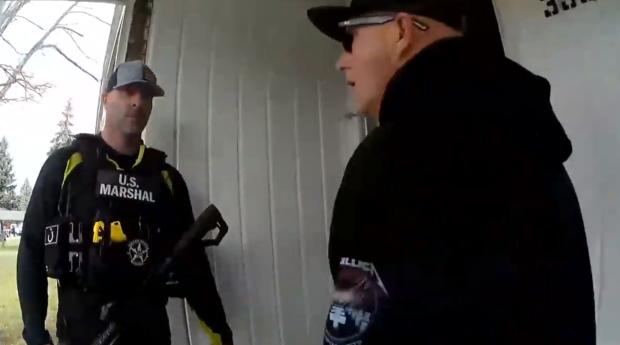Advertisement
The murder trial of retired Franklin County Sheriff Deputy Michael Jason Meade began in Franklin County Common Pleas Court after jury selection on January 30, 2024 – the day that would have been the 27th birthday of his shooting victim, Casey Goodson, Jr.
No one, including Meade and his colleagues, denies that Goodson died from six bullet shot wounds to his vital organs from Meade’s Daniel Defense AR-15 automatic rifle that released six bullets with one trigger pull. The bullets passed through a wire mesh and shattered a storm door before entering Goodson’s back as he was opening the kitchen door of his grandmother’s home on Estates Place in northeast Columbus the morning of December 4, 2020.
As in all murder trials, the burden of proof is on the prosecution to prove beyond a reasonable doubt that the death of the victim was intentionally caused by the accused. The level of the crime is determined by the circumstances and the mindset of the murderer.
But unlike most murder trials, because the defendant in this case was a law enforcement officer, his defense attorneys, Mark Collins and Kaitlyn Stephens, also have a burden of proof. They need to prove beyond a reasonable doubt that Meade was justified in using deadly force when causing the death.
The prosecution rested their case Tuesday morning after almost a week of witnesses establishing every detail known about the moments leading up to and just after Goodson’s death. The prosecuting attorneys, Howard T. Merkle and Gary S. Shroyer, serving as special counsel to Franklin County Prosecutor Gary Tyack, took the jury through video evidence, crime scene analysis, coroner’s reports, and first hand accounts from Goodson’s family.
It was often heart wrenching to hear, but the jury had been reminded by Stephens that they were not to use sympathy or empathy to evaluate the evidence. Goodson’s mother, Tamala Payne, and other family members have not missed a moment of the testimony. Many other community members and family friends are watching from the lobby outside the courtroom on the live stream provided by the court. https://fccourts.org/488/Live-Stream
Shroyer laid out the prosecution’s case in his opening arguments. He began by introducing Goodson as a nice young man, supportive of his family, with career goals, including returning to his job as a truck driver someday. That morning, he had left a dental appointment, picked up Subway sandwiches for his family on Morse Rd, and headed south on Karl Rd. toward his neighborhood.
As Goodson turned left onto Ferris Rd, he passed Meade, who had just left a failed attempt to serve a warrant on one of Goodson’s neighbors. He was serving on a US Marshal task force and his coworkers were following him out of the neighborhood on Ferris Rd. in their own vehicles.
Meade saw Goodson pass him and did a U-turn in the Karl/Ferris intersection in an unmarked pickup truck. He radioed on the US Marshall channel that he had just been threatened by a man pointing a gun at him from inside his car.
Meade and the other task force members followed Goodson down Estates Place, armed themselves, put on their bullet proof vests and other tactical gear. As they approached Goodson’s home, they saw Goodson get out of his car and walk toward his house.
Meade, carrying his rifle trained on Goodson, followed him into his front yard. Neighbors heard Meade order Goodson to show his hands and then shot and killed him as he unlocked and walked through the door to his home.
These facts have been testified to under oath and corroborated by more than one witness. The defense did not raise any doubt to these facts. For the first prong of this case, the prosecution has met the bar of proving beyond a reasonable doubt that Jason Meade killed Casey Goodson, Jr.
The second prong of the case began Tuesday morning with often animated back and forth between prosecutors and defense witnesses. The defense is actively trying to prove beyond a reasonable doubt that Meade was justified in killing Goodson. The prosecutors will continue to raise those doubts that the jury can consider when deliberating their verdict.





